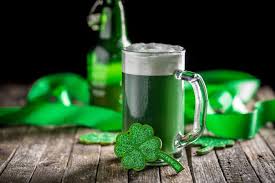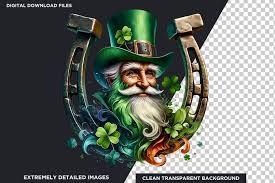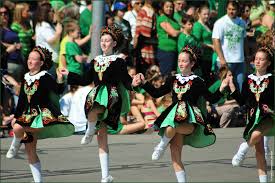St. Patrick’s Day, celebrated on March 17th each year, has evolved from a solemn feast day honoring a saint to a global celebration of Irish culture. From parades and green attire to shamrocks and pints of beer, the day has become one of the most widely recognized and celebrated events in the world. Whether you’re Irish or not, St. Patrick’s Day offers a chance to embrace a shared history, partake in fun traditions, and enjoy the spirit of revelry. Let’s take a journey through the origins and cultural significance of this vibrant holiday, and explore how it is celebrated today.
The Origins of St. Patrick’s Day
The history of St. Patrick’s Day traces back to the 5th century, when St. Patrick, the patron saint of Ireland, is said to have brought Christianity to the Irish people. Born in Britain in the late 4th century, Patrick was captured by Irish raiders at the age of sixteen and taken to Ireland as a slave. After six years of captivity, he escaped, only to later return to Ireland as a missionary, spreading the Christian faith and converting many Irish pagans.

Patrick is credited with using the three-leafed shamrock to explain the concept of the Holy Trinity (Father, Son, and Holy Spirit) to the Irish, which is why the shamrock has become such a significant symbol of both St. Patrick’s Day and Irish heritage. St. Patrick’s Day was originally a religious feast day to honor his life and work, but over the centuries, it has transformed into a broader celebration of Irish culture, pride, and heritage.
Traditions and Symbols
St. Patrick’s Day is packed with rich symbols and traditions that have evolved over the years. One of the most recognizable features of the holiday is the color green. Legend has it that wearing green makes you invisible to leprechauns, mischievous little fairies from Irish folklore who would pinch anyone not wearing the color. This playful custom has grown into a widespread tradition, with people around the world donning everything from green hats to full outfits in honor of the day.
The shamrock, as mentioned, is another central symbol. The three-leafed plant has become synonymous with St. Patrick and Irish culture, although there is no definitive proof that St. Patrick used it as an actual teaching tool. Regardless, the shamrock remains a powerful symbol of Ireland’s national identity and the spirit of St. Patrick.

The leprechaun, often depicted as a small, bearded man in a green coat, is also a central character in many St. Patrick’s Day celebrations. In Irish mythology, leprechauns are considered mischievous little creatures, known for hiding their pots of gold at the end of rainbows. While not directly tied to St. Patrick’s Day’s religious origins, leprechauns have become a fun and iconic part of the festivities.
The Modern Celebration
While St. Patrick’s Day began as a religious holiday, over time it has become a celebration of all things Irish. Parades, festivals, and parties are held across the world, with the largest and most famous celebrations taking place in cities like Dublin, New York City, and Boston. In fact, the first recorded St. Patrick’s Day parade took place not in Ireland, but in New York City in 1762, when Irish soldiers serving in the British Army marched through the streets to honor the saint. Today, the New York City St. Patrick’s Day parade is one of the largest parades in the world, drawing millions of spectators each year.
In addition to the parades, food and drink are central to the celebration. Irish dishes such as corned beef and cabbage, shepherd’s pie, and soda bread are commonly served at St. Patrick’s Day feasts. As for drinks, Guinness—an iconic Irish stout—is perhaps the most popular beverage consumed on the day, with countless pubs offering special St. Patrick’s Day promotions and drink specials. Some people even enjoy festive green-colored drinks, such as green beer or shamrock shakes.
For those not in Ireland, St. Patrick’s Day has grown into a celebration of Irish pride. Communities across the globe, especially in cities with large Irish-American populations, host festivals that showcase Irish music, dance, food, and drink. Celtic music, including the energetic sounds of the bagpipes and fiddles, fills the air, while Irish dancers perform traditional dances such as the jig and reel, which have roots in centuries-old Irish traditions.

A Global Celebration
Though St. Patrick’s Day began in Ireland, it has become a global event that transcends national borders. Irish immigrants brought the tradition of celebrating St. Patrick’s Day with them to the United States in the 18th century, and from there, the holiday spread to other countries with significant Irish populations, including Canada, Australia, and the United Kingdom. Over the years, people from all backgrounds have joined in the festivities, making it a day of multicultural celebration.
Interestingly, the Irish government has also embraced the holiday as a way to promote Irish culture and tourism. In Ireland, St. Patrick’s Day is both a religious and cultural event, with large parades and festivities taking place across the country. Dublin, the capital of Ireland, hosts a multi-day St. Patrick’s Festival, attracting visitors from all over the world to experience Irish music, dance, art, and food.

Conclusion
St. Patrick’s Day is much more than just a day of wearing green and drinking beer; it’s a celebration of Irish culture, history, and the enduring legacy of St. Patrick. What began as a religious feast day has grown into a global event that unites people of all backgrounds in celebration of Irish heritage. Whether you’re Irish or simply looking for an excuse to join the fun, St. Patrick’s Day offers an opportunity to connect with others, enjoy traditional foods and drinks, and take part in a time-honored tradition of music, dance, and revelry.
So, this March 17th, remember to don your green attire, raise a glass (or two), and celebrate all that makes Ireland and its people so special. Sláinte! (Cheers!)
